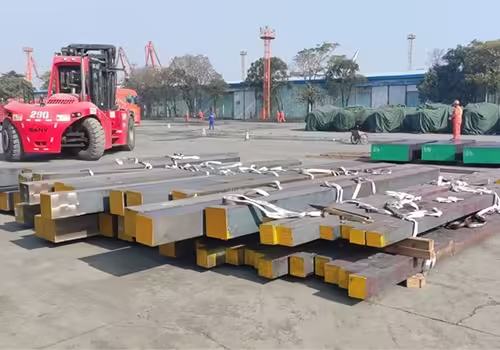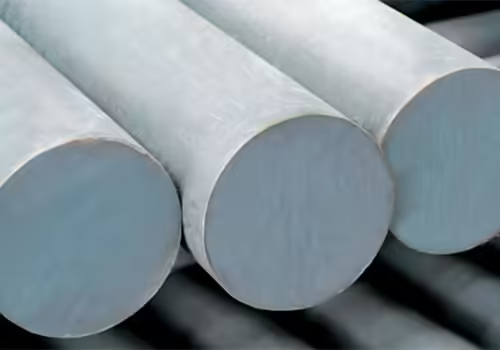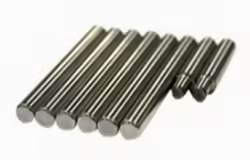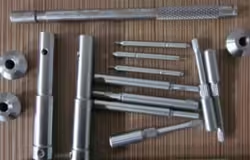
10 Key Factors the Hardness of 4140 Steel
Table of Contents
Introduction

4140 steel is a widely used alloy steel known for its excellent strength, toughness, and versatility. One of its most significant properties is its hardness, which plays a crucial role in determining the material’s performance across a range of applications. The hardness of 4140 steel is affected by several factors, and understanding these factors is essential when selecting or processing the steel for specific uses. In this blog, we’ll explore 10 key factors that influence the hardness of 4140 steel, providing insights into how these variables can be manipulated to achieve the desired properties.
Henan Jiyuan Iron and Steel (Group) Co., Ltd. was founded in 1958. It has rich experience in production and research and development. It provides you with one-stop steel services and welcomes consultations from customers around the world.
Chemical Composition of 4140 Steel
The chemical composition of 4140 steel significantly impacts its hardness. This alloy primarily consists of carbon, chromium, molybdenum, and manganese, each of which contributes to the steel’s overall hardness. The carbon content plays a crucial role, with higher carbon levels typically leading to increased hardness. Chromium and molybdenum enhance the steel’s hardenability and resistance to wear, further influencing its hardness.
Heat Treatment Process and Its Effect on Hardness

Heat treatment is one of the most critical factors in determining the hardness of 4140 steel. The process typically involves heating the steel to a high temperature, followed by rapid cooling (quenching) and tempering. The cooling rate during quenching has a direct impact on the hardness level. A faster cooling rate leads to higher hardness, while tempering after quenching adjusts the hardness to meet specific requirements.
Quenching Temperature
The quenching temperature is another vital factor that affects the hardness of 4140 steel. Steel must be heated to a specific temperature range before quenching to achieve the desired hardness. The optimal temperature typically falls between 800°C and 900°C. If the steel is not heated to the correct temperature, the resulting hardness may be lower than expected.
Cooling Medium
The cooling medium used during the quenching process also plays a significant role in the hardness of 4140 steel. Different media, such as water, oil, or air, can affect the cooling rate and, consequently, the hardness of the steel. Water, for example, cools the steel more quickly than oil, which results in a harder material.
Tempering Temperature and Time
Tempering is a process used to adjust the hardness of 4140 steel after quenching. By heating the steel to a lower temperature and holding it for a specified period, tempering can relieve internal stresses and reduce brittleness, while still maintaining an adequate hardness. The temperature and duration of tempering are key factors in achieving the desired balance between hardness and toughness.
The Role of Alloying Elements in Hardness
4140 steel’s alloying elements, such as chromium, molybdenum, and manganese, significantly influence its hardness. Chromium improves hardenability, while molybdenum enhances toughness and resistance to high temperatures. Manganese, on the other hand, helps with the deoxidization process and strengthens the steel. Understanding how these elements interact allows for better control over the final hardness of 4140 steel.
Grain Size and Its Impact on Hardness

Grain size plays a vital role in the hardness of 4140 steel. Smaller grain sizes tend to result in higher hardness, as the smaller grains allow for more uniform distribution of dislocations within the material. Controlling grain size during heat treatment can, therefore, have a profound impact on the final hardness of the steel.
The Influence of Carbon Content on Hardness
The carbon content of 4140 steel is a primary determinant of its hardness. Steel with higher carbon content tends to achieve higher hardness levels due to the formation of carbon-rich compounds within the structure. However, excessive carbon can also lead to brittleness, making it important to balance carbon content carefully.
Work Hardening and Its Effect on Hardness
Work hardening, or strain hardening, occurs when 4140 steel is mechanically deformed, which increases its hardness. The process involves the dislocation of the steel’s crystal structure, which leads to an increase in resistance to further deformation. Work hardening can be used to improve the hardness of 4140 steel in specific applications, such as in the manufacturing of tools or machinery parts.
Environmental Factors and Their Impact on Hardness
Environmental factors, such as temperature fluctuations and exposure to certain chemicals, can also influence the hardness of 4140 steel. In industrial environments where the steel is subjected to extreme conditions, the material’s hardness may change over time. Protective coatings or surface treatments can be applied to maintain hardness in these challenging environments.
Table: Key Factors Affecting the Hardness of 4140 Steel
| Factor | Influence on Hardness | Key Considerations |
|---|---|---|
| Chemical Composition | Directly impacts overall hardness. | Higher carbon and alloying elements increase hardness. |
| Heat Treatment Process | Critical for achieving optimal hardness. | Quenching and tempering are crucial steps for hardness control. |
| Quenching Temperature | Determines the steel’s hardness after quenching. | Temperatures between 800°C and 900°C are optimal. |
| Cooling Medium | Affects cooling rate, which influences hardness. | Water cools faster than oil, leading to increased hardness. |
| Tempering Temperature & Time | Adjusts hardness and toughness after quenching. | Higher tempering temperatures reduce hardness but increase toughness. |
| Alloying Elements | Enhances hardenability and wear resistance. | Chromium, molybdenum, and manganese are key contributors. |
| Grain Size | Smaller grains typically lead to higher hardness. | Control grain size through heat treatment for desired hardness. |
| Carbon Content | Higher carbon levels increase hardness. | Too much carbon can make the steel brittle. |
| Work Hardening | Increases hardness through mechanical deformation. | Work hardening can be utilized for tools or machinery parts. |
| Environmental Factors | Can affect the hardness over time. | Extreme environments may require additional treatments. |
Conclusion

The hardness of 4140 steel is determined by various factors, each of which plays a crucial role in ensuring the material performs as required in specific applications. From chemical composition and heat treatment processes to grain size and environmental factors, understanding these variables enables manufacturers and engineers to tailor the material to suit different needs. By controlling and manipulating these factors, the desired hardness level of 4140 steel can be achieved, ensuring that the steel performs efficiently and reliably.
FAQ
Q: What is the ideal carbon content for achieving high hardness in 4140 steel?
The ideal carbon content for achieving high hardness in 4140 steel typically falls around 0.38% to 0.43%. Higher carbon content can increase hardness but may also lead to brittleness.
Q: How does the cooling medium affect the hardness of 4140 steel?
The cooling medium influences the quenching rate. Water cools the steel faster, leading to higher hardness, while oil cools more slowly, which may reduce the final hardness but increase toughness.
Q: Can work hardening increase the hardness of 4140 steel?
Yes, work hardening increases the hardness of 4140 steel by causing mechanical deformation that alters its crystal structure. This is often utilized in applications where the material will undergo repeated stress or wear.
Q: What is the optimal quenching temperature for 4140 steel?
The optimal quenching temperature for 4140 steel is between 800°C and 900°C. Quenching at the right temperature ensures that the steel achieves the desired hardness.
Q: How can I control the hardness of 4140 steel?
The hardness of 4140 steel can be controlled through various means, including adjusting the chemical composition, selecting the appropriate heat treatment process, managing the cooling rate, and optimizing tempering conditions.






